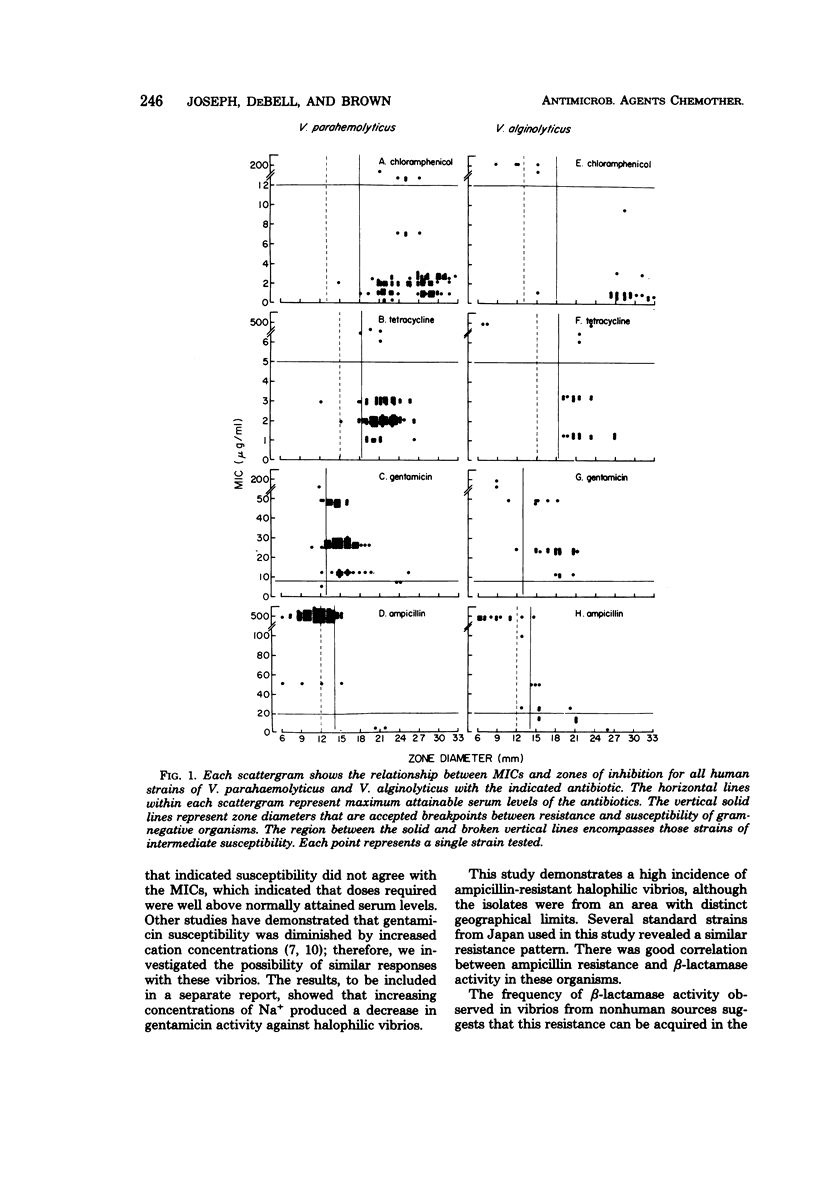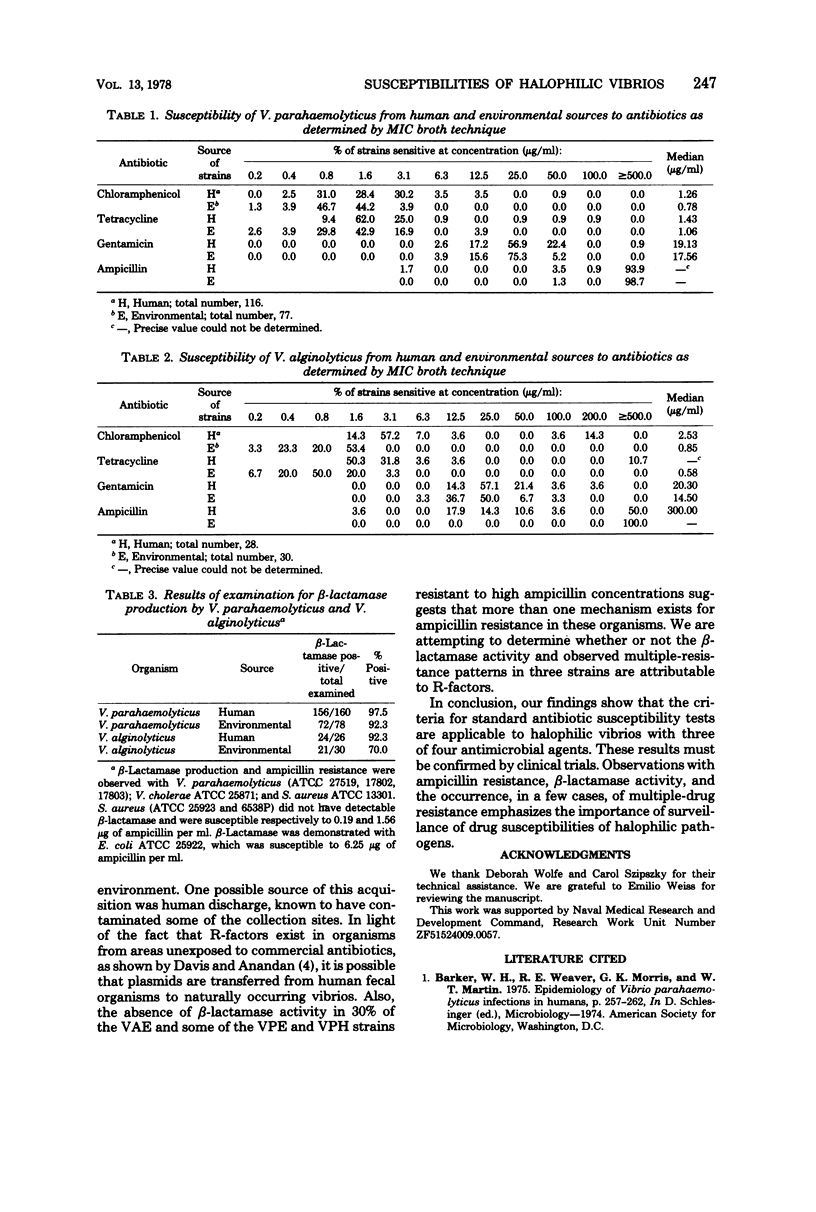Abstract
Isolates of Vibrio parahaemolyticus and V. alginolyticus from human and environmental sources were examined for antibiotic susceptibility by the methods of minimal inhibitory concentration (MIC) in broth and agar diffusion. These strains were found to be almost uniformly susceptible to chloramphenicol and tetracycline within attainable serum levels. The relationships of zone sizes to MICs for these two antimicrobial agents and ampicillin conformed essentially to those obtained by standard methods with gram-negative rods. Most strains were resistant to ampicillin and exhibited β-lactamase activity, which accounted for this resistance. Nine of 30 V. alginolyticus strains from environmental sources were ampicillin resistant but did not produce measurable amounts of β-lactamase. Three strains exhibited multiresistance to high concentrations of chloramphenicol, tetracycline, and ampicillin, which suggests the presence of plasmids. Although the great majority of vibrios appeared to be susceptible to gentamicin by agar diffusion, susceptibility could not be measured by MIC because the added NaCl, required for growth by the halophilic vibrios, diminished gentamicin activity.
Full text
PDF




Selected References
These references are in PubMed. This may not be the complete list of references from this article.
- Bauer A. W., Kirby W. M., Sherris J. C., Turck M. Antibiotic susceptibility testing by a standardized single disk method. Am J Clin Pathol. 1966 Apr;45(4):493–496. [PubMed] [Google Scholar]
- Davis C. E., Anandan J. The evolution of r factor. A study of a "preantibiotic" community in Borneo. N Engl J Med. 1970 Jan 15;282(3):117–122. doi: 10.1056/NEJM197001152820302. [DOI] [PubMed] [Google Scholar]
- Hollis D. G., Weaver R. E., Baker C. N., Thornsberry C. Halophilic Vibrio species isolated from blood cultures. J Clin Microbiol. 1976 Apr;3(4):425–431. doi: 10.1128/jcm.3.4.425-431.1976. [DOI] [PMC free article] [PubMed] [Google Scholar]
- PERRET C. J. Iodometric assay of penicillinase. Nature. 1954 Nov 27;174(4439):1012–1013. doi: 10.1038/1741012a0. [DOI] [PubMed] [Google Scholar]
- Rubin S. J., Tilton R. C. Isolation of Vibrio alginolyticus from wound infections. J Clin Microbiol. 1975 Dec;2(6):556–558. doi: 10.1128/jcm.2.6.556-558.1975. [DOI] [PMC free article] [PubMed] [Google Scholar]
- Thorsteinsson S. B., Minuth J. N., Musher D. M. Clinical manifestations of halophilic non-cholera Vibrio infections. Lancet. 1974 Nov 30;2(7892):1283–1284. doi: 10.1016/s0140-6736(74)90141-x. [DOI] [PubMed] [Google Scholar]
- Workman R. G., Farrar W. E., Jr Activity of penicillinase in Staphylococcus aureus as studied by the iodometric method. J Infect Dis. 1970 Apr;121(4):433–437. doi: 10.1093/infdis/121.4.433. [DOI] [PubMed] [Google Scholar]
- von Graevenitz A., Carrington G. O. Halophilic vibrios from extraintestinal lesions in man. Infection. 1973;1(1):54–58. doi: 10.1007/BF01638258. [DOI] [PubMed] [Google Scholar]


